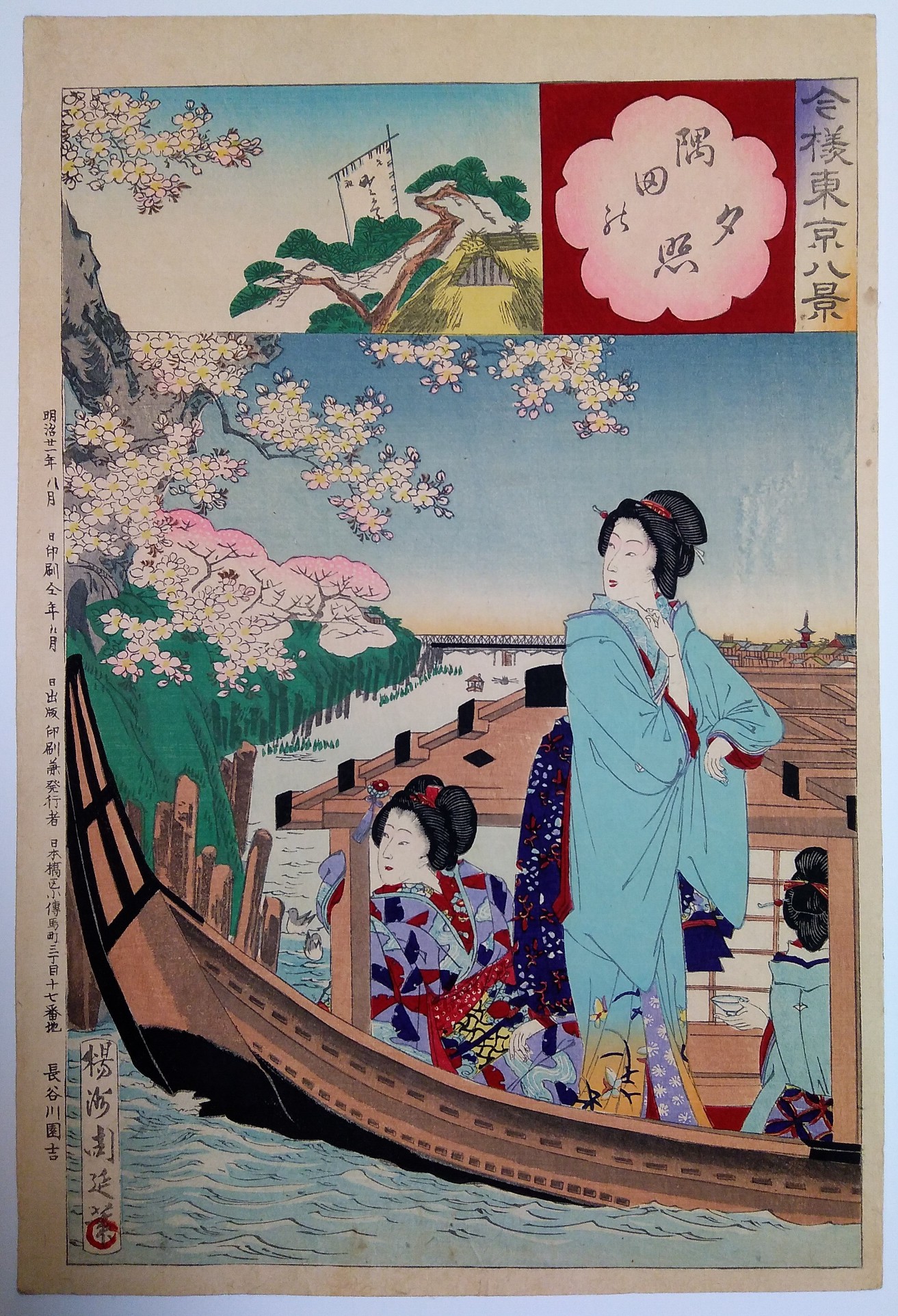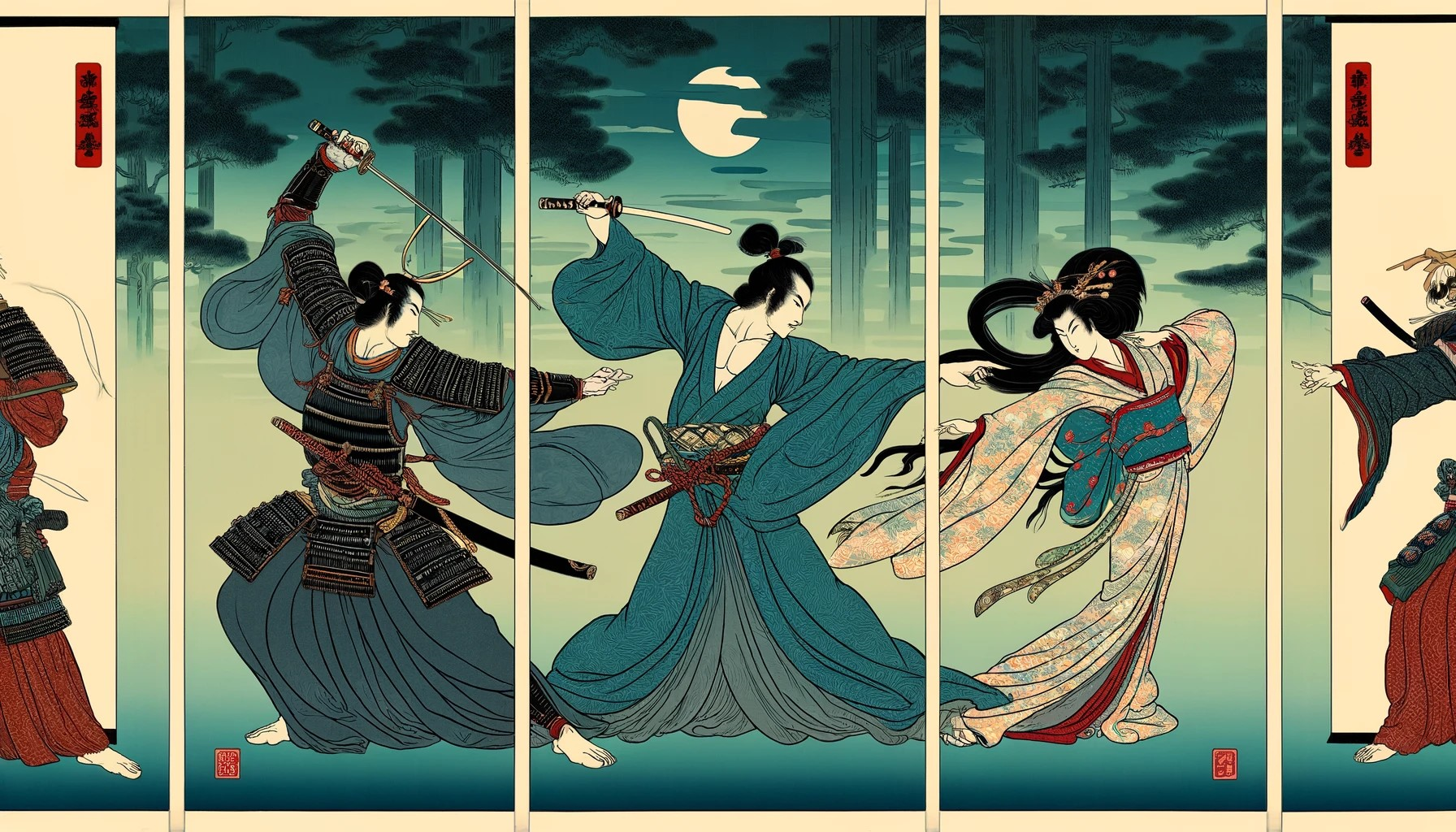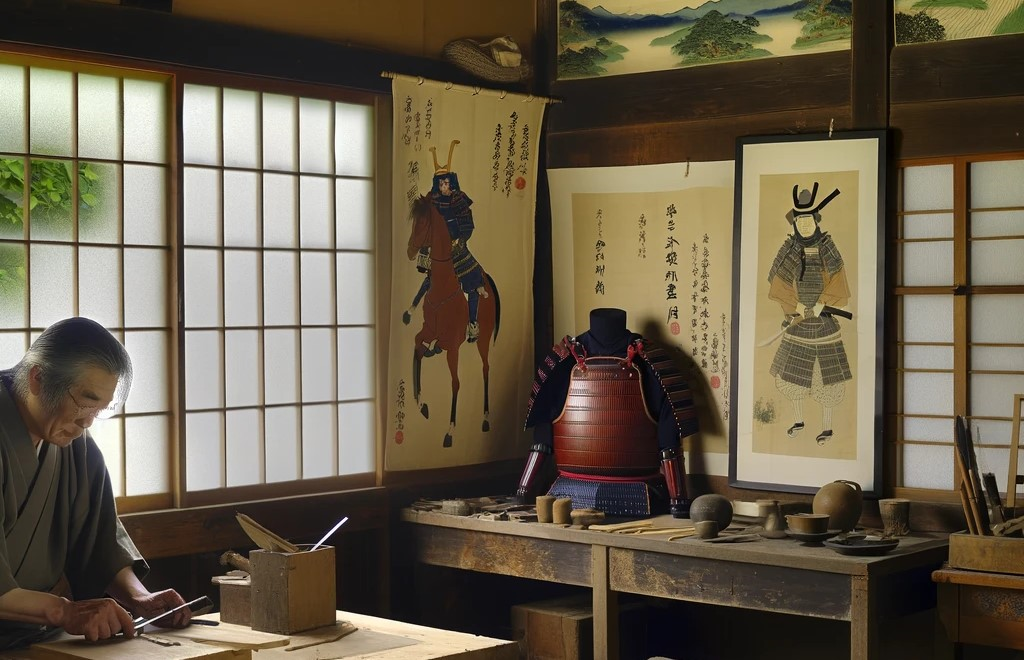Chikanobu ( 1838 ~ 1912 )
Chikanobu Toyohara, also known as Yoshu and named artistically after his master Toyohara Kunichika (豊原国周),
was one of the most influential woodblock print (ukiyo-e, 浮世絵) artists of the Meiji period (明治時代).
Born in Niigata Prefecture (新潟県) as Naoyoshi Hashimoto (橋本直義) into a samurai family serving the Sakakibara (榊原) clan,
Chikanobu distinguished himself early on in Kano (狩野) style painting.
During the Meiji Restoration, he fought as a warrior in the Battle of Ueno (上野の戦い) in 1868 on behalf of the Tokugawa (徳川) clan,
an experience that deeply influenced his art, especially in his depictions of the 1877 Satsuma Rebellion (薩摩の反乱) and the 1882 Imo
Incident (壬午事変) in Korea.
After moving to Tōkyō (東京), he studied print design initially with Kuniyoshi Utagawa (歌川国芳) and later with Kunisada I Utagawa (歌川国定),
becoming a prominent figure in the Utagawa school (歌川派). He worked as a newspaper illustrator and established himself as an independent
artist in 1871, exploring a variety of genres ranging from kabuki (歌舞伎) actors and beautiful women to landscapes and military subjects.
His "enlightenment pictures" or "kaika-e" (開化絵) documented Japan's rapid modernization.
Chikanobu was known for his ability to integrate traditional Japanese techniques with Western imagery and materials, such as aniline dyes, which
added a visual sophistication to his works.
Toward the end of his career, he exhibited a marked nostalgia for traditional Japan, reflecting this sentiment in his works that celebrated the
heroism of samurais and the elegance of women in historical settings. Among his most famous series is 'The Inner Palace of Chiyoda' ('Chiyoda no O-oku', '千代田の大奥'),
which depicted court life during the Tokugawa shogunate (徳川幕府).
Chikanobu died in 1912 from stomach cancer, leaving a lasting legacy as one of the last great masters of ukiyo-e, capable of capturing the essence of an era
of significant cultural and social changes in Japan.

Sunset on Sumida river
Eight views of modern Tōkyō
Sold out


